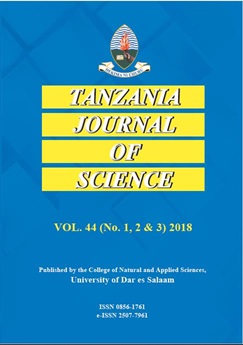Monthly and Seasonal Rainfall Concentrations and Predictability in Tanzania
Abstract
This study aimed at determining the monthly and seasonal rainfall concentration, predictability and the changes in rainfall seasons in Tanzania. Rainfall predictability was determined using Colwell ' s indices, Rainfall Concentration Index (RCI) and Coefficient of Variation (CV). Results showed that rainfall in December €“February (DJF), January €“March (JFM) and February €“April (FMA) has predictability due to constancy of 60%, RCI ‰¤ 9 and CV < 0.4 in Lake zone, Central zone, Southern Coast zone, Western and Southern Highlands zone. Rainfall in October to December (OND) was reliable in the Island zone, North-Eastern highlands zone and Northern coast zone with an average predictability due to constancy of 65%. In the Lake zone, all seasons (DJF, JFM, FMA, MAM, OND and DJFMAM) had uniform rainfall distribution (RCI = 8.7, CV = 0.35) and predictability due to constancy of 80% which leads to the conclusion that Lake Zone has unimodal rainfall distribution. Rainfall predictability in Tanzania has a West-East gradient. The western zones had an average predictability due to constancy of 68%. In general, rainfall in Tanzania is observed to be highly variable; only 20% of the predictability is concerned with reliability in the rainfall occurrence within the seasons and 80% is due to seasonality.
Keywords: Rainfall concentration index; predictability; coefficient of variation; seasonality; constancy.


